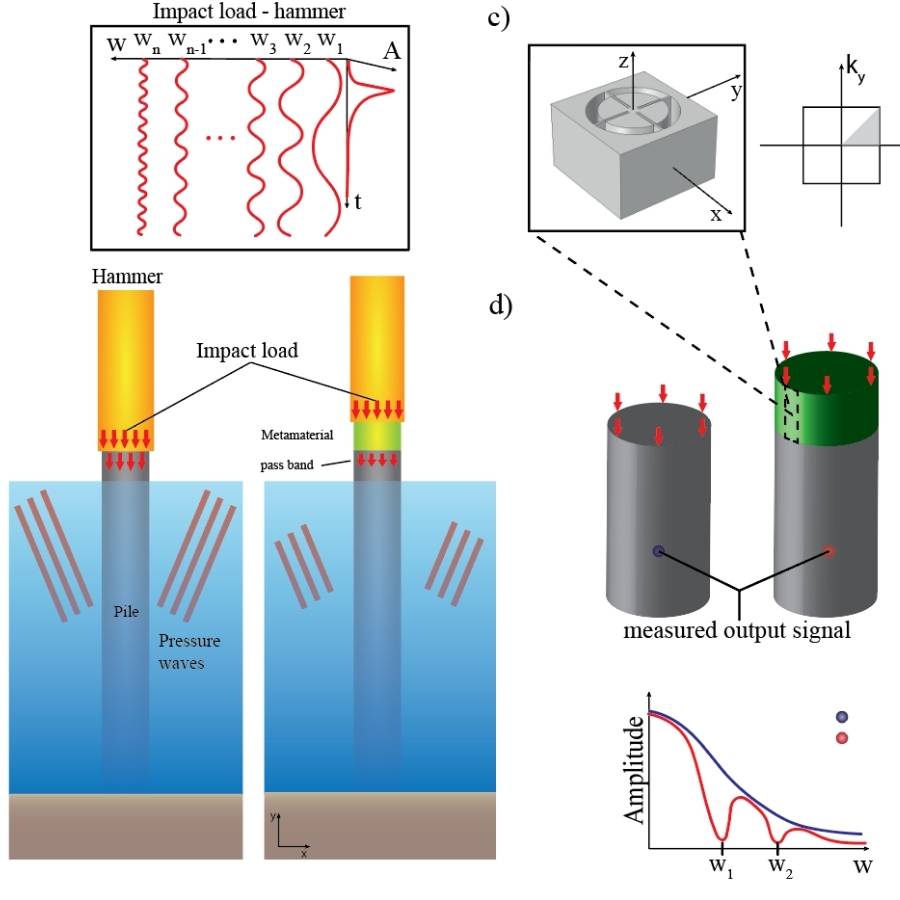Metastructures
Design optimization and prototyping of large-scale metamaterial structures for vibration control
Elastic Metamaterial-Based Structure for Structural Resonance Shielding
It has been stated that noise is one of the main causes of not only structural damage but also hearing injury to species living around the noise source. A well-known noise problem is the sound produced by the process of driving an offshore monopile into the seabed, which is a common foundation used during the installation of wind farms. The current noise-control techniques used in this process still face challenges in reducing low-frequency noise, which can also be harmful to marine life. To overcome this limitation, this project proposes an elastic metamaterial-based structure composed by single-phase resonant structures. The proposed structure will be used to remove energy from the input signal related only to a high noise level. The remaining energy will be used for the pile driving process. The identification of the frequency range associated with high noise levels is performed by a numerical investigation of the pile driving system. Such range is targeted as the design frequency of the metamaterial’s internal resonators. A frequency analysis of the pile driving system with attached metamaterial is evaluated. The new sound levels are compared with a pile driving system with a common interface. Then, an experimental study will be performed to evaluate the effectiveness of the proposed structure in filtering energy of the impact load. The presented device opens the door for the development of less complex structures with potential in reducing noise directly from the source.
Additive Manufacturing of Lattice Nitinol Structures with Tailorable Mechanical Properties
Additive manufacturing (AM) has provided new flexibilities to design and manufacture mechanical metamaterial with tailorable functionalities. However, most designs of metal metamaterial depend on the mechanical properties of traditional structural metals. Nitinol (NiTi) shows shape memory effect and superelasticity due to diffusionless Martensitic transformation. This project aims to develop a functional NiTi lattice structure with tailorable damping properties using Powder Bed Fusion (PBF). Microstructures could be controlled through parameters optimization and post-processing to tailor the superelasticity of constituent NiTi alloys. The Martensitic transformation and nonlinear mechanical behaviours of the basis material are fundamental in the design and optimization of the topological structure of the unit cell. We will explore how we can design and manufacture the new metamaterial benefiting from superelasticity and topological structure that show tailorable mechanical properties.


